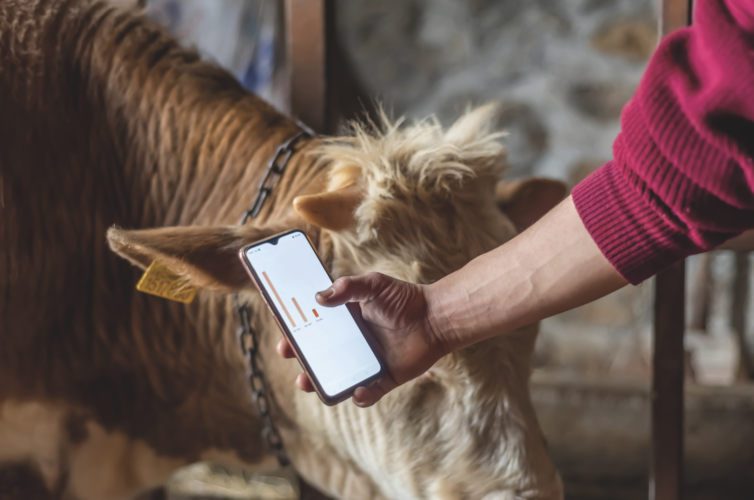The Internet of Things (IoT) is improving agriculture and livestock management by helping to reduce waste and emissions and increaseefficiency and cost- effectiveness.
Alex Pluemer for Mouser Electronics
The Internet of Things (IoT) permeates almost every area of human life, from smartphones and tablets to automobiles and factories. It’s even helping to improve agriculture; for example, data collected from sensors in the soil can help improve crop yields, and more precise weather monitoring can help limit crop exposure to frost, drought, and other weather-related liabilities.
This “smart” agriculture is also helping to reduce the amount of natural resources required to grow food and cash crops as well as reducing waste and emissions, thereby lowering the overall carbon footprint. Technology and the IoT aren’t just making inroads into crop-based agriculture, though—they are also helping to improve livestock management. Farmers and ranchers are using digital technology to optimize the processes by which they raise livestock from infancy to financial viability.
Farmers and ranchers can use radio frequency identification (RFID) tags to track livestock movement and monitor the herd’s health (individually and collectively), similar to how veterinarians and forest rangers use sensors and GPS monitoring to track animal movement in captivity and in the wild. An animal’s heart rate, blood pressure, body temperature, etc., can be monitored and analyzed in real time by an edge device or in the cloud. Data on feeding and grazing patterns can help improve nutrition and limit waste. Data on factors like milk and egg production can help farmers and ranchers choose what breed of livestock they want to invest in. In some cases, the IoT can even help farmers and ranchers create new species of animals explicitly designed for specific climates/environments.
In this article, we’ll look at how farmers and ranchers are using IoT to make the process of raising meat- or dairy-producing animals a more efficient, cost- effective enterprise. We will also examine how the IoT might change the future of the global food supply.
ID Tags and Monitoring Sensors
ID tags are critical to maintaining a healthy, productive herd (for example, it’s hard to separate a sick and possibly contagious animal from the pack when you can’t tell one animal from another), and RFID tags have been implemented in livestock management for years. Low-frequency RFID tags are popular with cattle ranchers because their performance isn’t adversely affected by the water in the animals’ bodies, but their range is limited to a few inches at most. High-frequency RFID tags can be read from a few feet away, but their signals can be hindered by water. Ultra- high-frequency RFID tags have a range of up to 20 feet, but water in animals’ bodies can seriously affect performance, so the tags must be placed on an animal’s ear to be effective.
Accurate time and location tracking information is about more than just telling livestock apart. For example, knowing precisely where and when animals are grazing can give farmers and ranchers insight into potential food-borne bacteria or illnesses. Animals that seem to be experiencing sharp decreases in activity and movement may show signs of disease or pregnancy. Even the time animals spend sitting in the sun instead of the shade can give farmers and ranchers an idea of which temperatures lead certain animals to be the most comfortable or productive.
Precise location monitoring is just one aspect of livestock management that the IoT is helping to improve. Another is monitoring body temperature. For example, by using sensors to monitor the body temperature of dairy cows, farmers and ranchers can help reduce the intervals between calving and increase both the frequency they produce milk and their overall yield. Dairy cows under stress are typically less productive than usual, which makes monitoring their environment another important factor in managing livestock.
Sensors can tell farmers and ranchers when animals are excessively panting, a sign of overheating or stress. Electronic applicators and tissue sampling can help monitor animals’ cortisone and other hormone levels in real time, another significantindicator of elevated stress levels in animals. Data collected from sensors on each animal can help farmers and ranchers make better decisions for the health and
productivity of the overall herd, like separating productive animals in colder environments from ones that prefer warmer climates. Knowing where and how every animal in a herd is at all times is invaluable to farmers and ranchers and helps to reduce the overall cost by requiring less labor to keep track of the livestock.
Precision Feeding and Grazing
Farmers and ranchers also use IoT to optimize feeding and nutrition efficiency. For example, by monitoring vital signs and other health factors after a change to the feeding schedule or the introduction of a different brand of feed, farmers and ranchers can look at data to determine the best kind of feed to buy and then optimize the feeding schedule to maximize production. Precise nutritional monitoring is integral to developing feeding systems that provide livestock with the proper nourishment while maximizing resources, enhancing animal growth and dairy production, and even reducing methane emission levels.
IoT monitoring can also help optimize the feeding process for grazing animals. Precise location monitoring can tell farmers and ranchers exactly where their animals are frequently grazing (within a matter of feet), how long they fed, and approximately how much they consumed.
One of the most significant expenses in raising grazing animals is the land required for the herd to feed. The IoT can help farmers and ranchers get the most out of their grazing land by optimizing rotational feeding patterns based on historical data, thereby reducing the amount of total grazing land necessary to feed the herd and lowering overall costs.
Genomics and Selective Breeding
Data collected by IoT sensors can do more than help optimize animals’ environments for maximum production and efficiency—it can help breed animals to thrive in specific environmental conditions, optimizing the animals themselves to their environments. For example, certain breeds of cattle may require less water than others to grow and/or produce milk and are therefore better suited to more arid climates. Farmers in drought-affected areas can crossbreed their animals with these cattle to create a herd that’s more capable of flourishing in drier conditions.
By monitoring how much food and water specific cattle breeds consume in different stages of development, ranchers and genetic engineers can determine which species are more apt to prosper in particular habitats. Ranchers in Northern Australia have created composite cattle breeds that are more tolerant of extreme heat and drought to combat the effects of climate change by monitoring its impact on different cattle breeds via a sensor network on the individual animals.
Monitoring animal health can also give farmers and ranchers insights into what breeds of animals are resistant to disease or pests, so they can then breed their animals accordingly (Figure 1). By combining the DNA of a breed of cattle that is resistant to a particular illness or disease with other breeds, ranchers can effectively eradicate diseases in a few generations. As climate change continues to change the natural world, livestock monitoring may be the key to ensuring that our food supply can withstand environmental upheaval.
Another critical factor in future genetic selection and crossbreeding programs will be reducing the emission of methane in an effort to lower agriculture’s carbon footprint. By measuring the changing methane levels in barns and indoor livestock facilities with environmental sensor networks, farmers
and ranchers can determine what kinds of feed increase methane production in specific cattle breeds and adjust accordingly. Genetic engineers have even made progress in designing vaccines that help reduce methane emissions from cattle with data collected from livestock facilities and individual animals.
Conclusion
The IoT has a more significant impact on your food supply than you might think. Horticulturists and crop farmers use data collected from plants and soil to optimize growth and maximize harvests. Now ranchers and livestock managers are using data collected from animals to much the same effect.
Climate change is altering how we look at maintaining the global food supply, and sensor and data collection technology may be the key to withstanding some of the harsh new realities of an ever-changing physical world. The goal of this partnership between technology and cultivation is climate-smart agriculture, which targets increased productivity, enhanced resilience to extreme weather patterns and disease, and reduced waste and emissions. With the help of sensor technology and the IoT, farmers and ranchers are getting closer than ever to that ideal.

